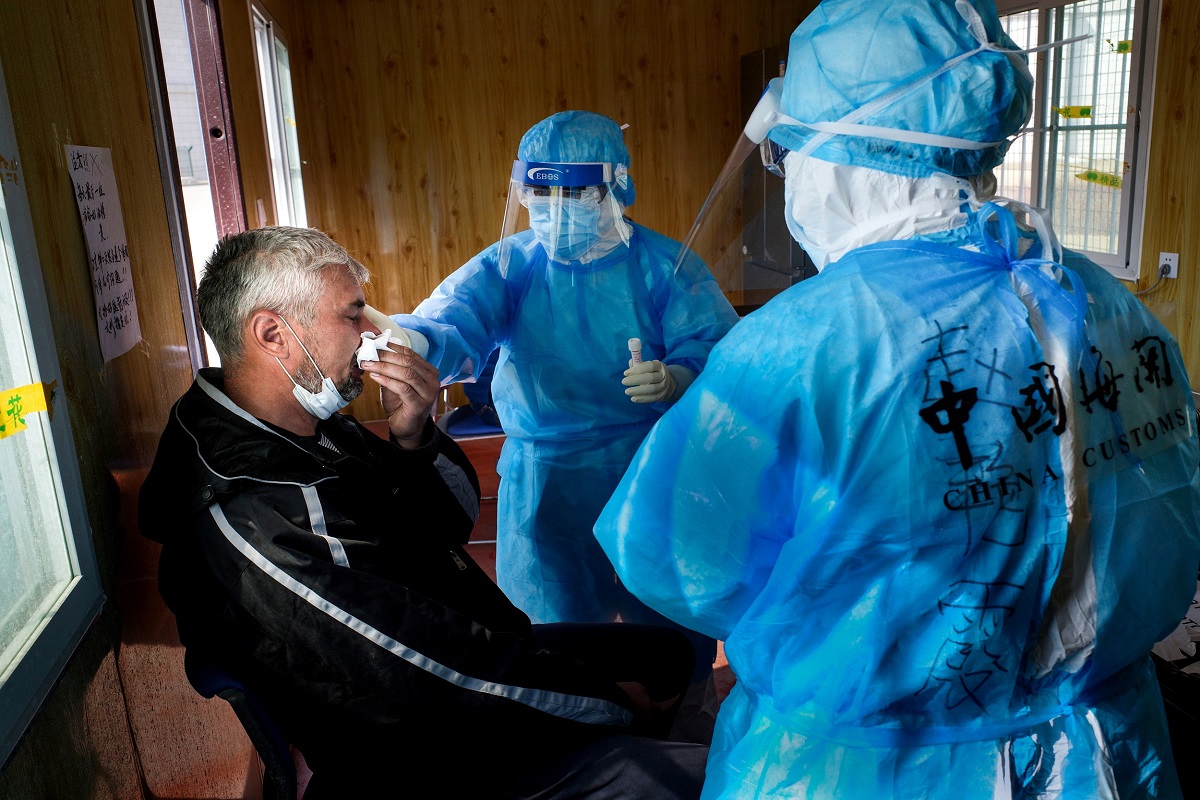China reported its first cases of the new coronavirus in December. But was Covid-19 already silently circulating? To find out scientists are looking for “patient zeros” by tracking the evolution of the virus itself.
This genetic detective work is tracing the family tree of the coronavirus that has killed tens of thousands in its relentless spread across the planet.
Advertisement
It could also help find out if the virus was spreading in other countries before the first infections were officially recorded.
In France, a cluster of cases was discovered in late January.But a new study published in the International Journal of Antimicrobial Agents has suggested the virus was already in the country a month earlier.
A retrospective analysis of samples taken from 14 intensive care patients with influenza-like symptoms at the Avicenne and Jean-Verdier hospitals in Paris found one positive COVID-19 case — a 42-year-old French resident who had not visited China. He was hospitalised on December 27.
Olivier Bouchaud, head of the infectious diseases department at Avicenne said at first the virus spreads “quietly in the population, without anyone detecting its presence”.
So evidence of earlier infections would only confirm what many scientists had suspected, he told AFP.
It might also help explain cases like that of Aicha, a 57-year-old medical secretary who was hospitalised in Marseille in mid-January with severe respiratory symptoms.
At the time the mysterious outbreak of pneumonia cases in the Chinese city of Wuhan was still seen as a faraway problem.
France did not have a single case and the World Health Organization was still weeks away from giving it the name COVID-19.
Aicha’s husband Jacques, a doctor, said she had “all the clinical signs” of the disease, including loss of taste and smell. But her tests have been inconclusive.
Other countries are discovering they may have had earlier infections. In the United States, autopsies performed on suspicious deaths in California have revealed infections before the first official case on January 21.
But Samuel Alizon, of the French National Centre for Scientific Research at Montpellier University, has cautioned that it is important to distinguish between isolated cases and the origin of the “epidemic wave”.
China Origins
In China, Wuhan health authorities have spoken of an initial case on December 8.
A study published in The Lancet in January said the first patient identified in the city started showing symptoms on December 1.
The timeline has been roughly corroborated by research mapping out the genetic evolution of the virus.
So far the genomes of more than 15,000 samples of the new coronavirus have been sequenced. As it replicates it produces multiple mutations, although none has been found to change its virulence.
Alizon said that about twice a month a mutation happens that stays in the genetic sequence, giving researchers a trail to follow.
So “if you compare two viruses, you can count how many mutations separate them,” he said. Following the chain we find the “ancestor common to all infections”.
Using publicly shared genome sequences, Andrew Rambaut of the University of Edinburgh found that the “lack of diversity is indicative of a relatively recent common ancestor for all these viruses”.
He estimated that this ancestor could have emerged around November 17 last year (with a range of uncertainty between August 27 and December 29).
Imperial College London, in collaboration with the WHO, has also traced the virus’ family tree, estimating that it appeared in China on December 5 (with a margin of uncertainty between November 6 and December 13).
Erik Volz, an epidemiologist at Imperial College, said all of the very earliest genetic sequences of the virus collected in Wuhan in December and January “have almost identical genomes”.
“And all viruses currently circulating elsewhere in the world are descended from these closely related lineages in Wuhan,” he told AFP.
But experts do not think of an epidemic as having a single starting point in time, he added: rather, they are seeded “multiple times from multiple points of origin”.
He said estimates of the dates of these “seeding events” suggests the epidemics in many European and North American cities began in mid-January or early February.
‘We will never know’
Italian research suggests the virus arrived in Lombardy between the second half of January and the beginning of February — weeks before the first infections were confirmed on February 20.
Football players for Inter Milan have said they suffered symptoms of the virus at the beginning of the year. Could they have had it?
“We had a week off in December and then we went back to work and I swear that 23 out of 25 players were sick,” Belgian Inter Milan striker Romelu Lukaku said in a recent radio interview.
The players were not tested for the virus at the time. Even if they took serological tests now and antibodies were found in their blood, it would not confirm when they were infected. “We will never know,” said Lukaku.











